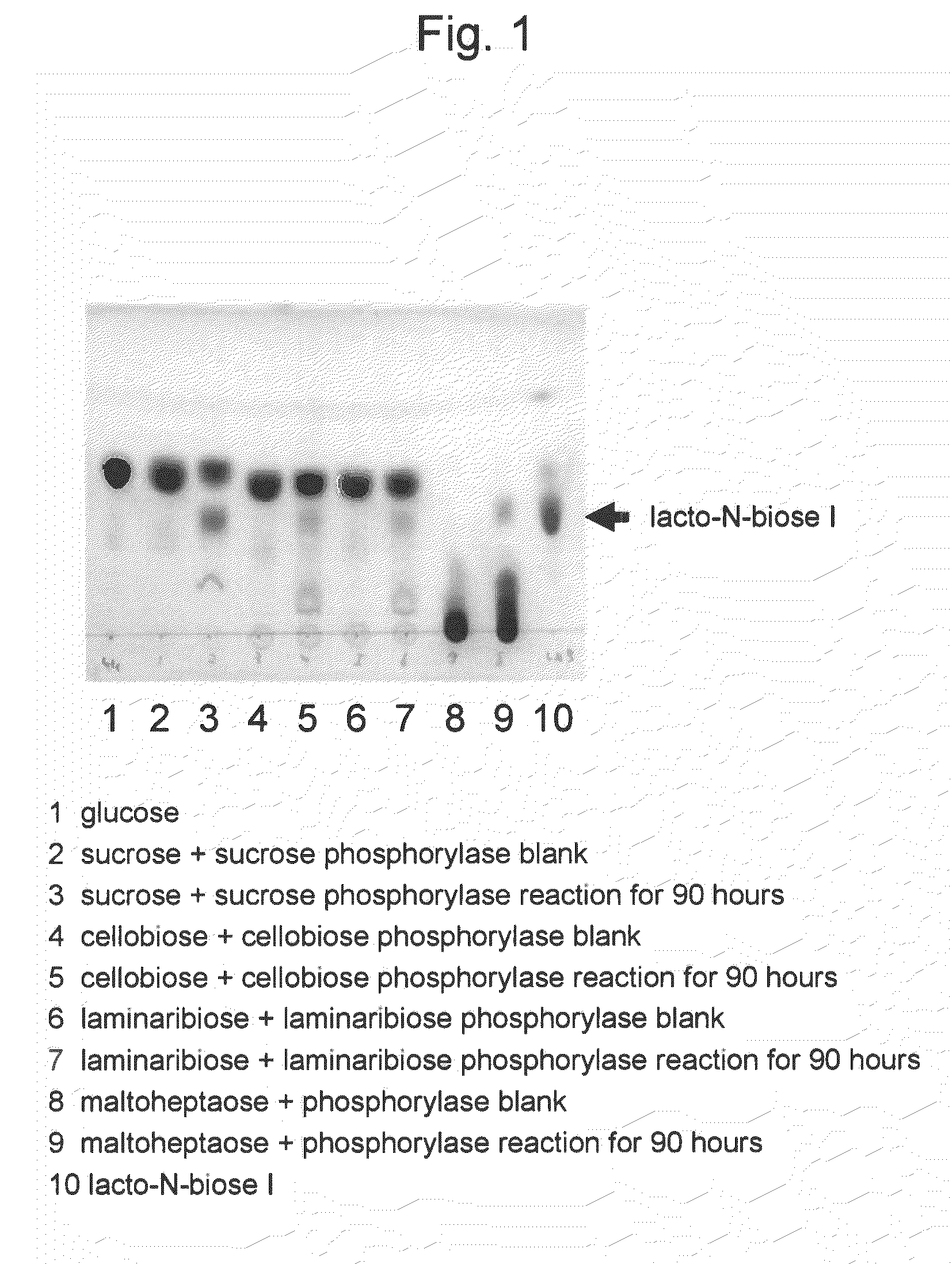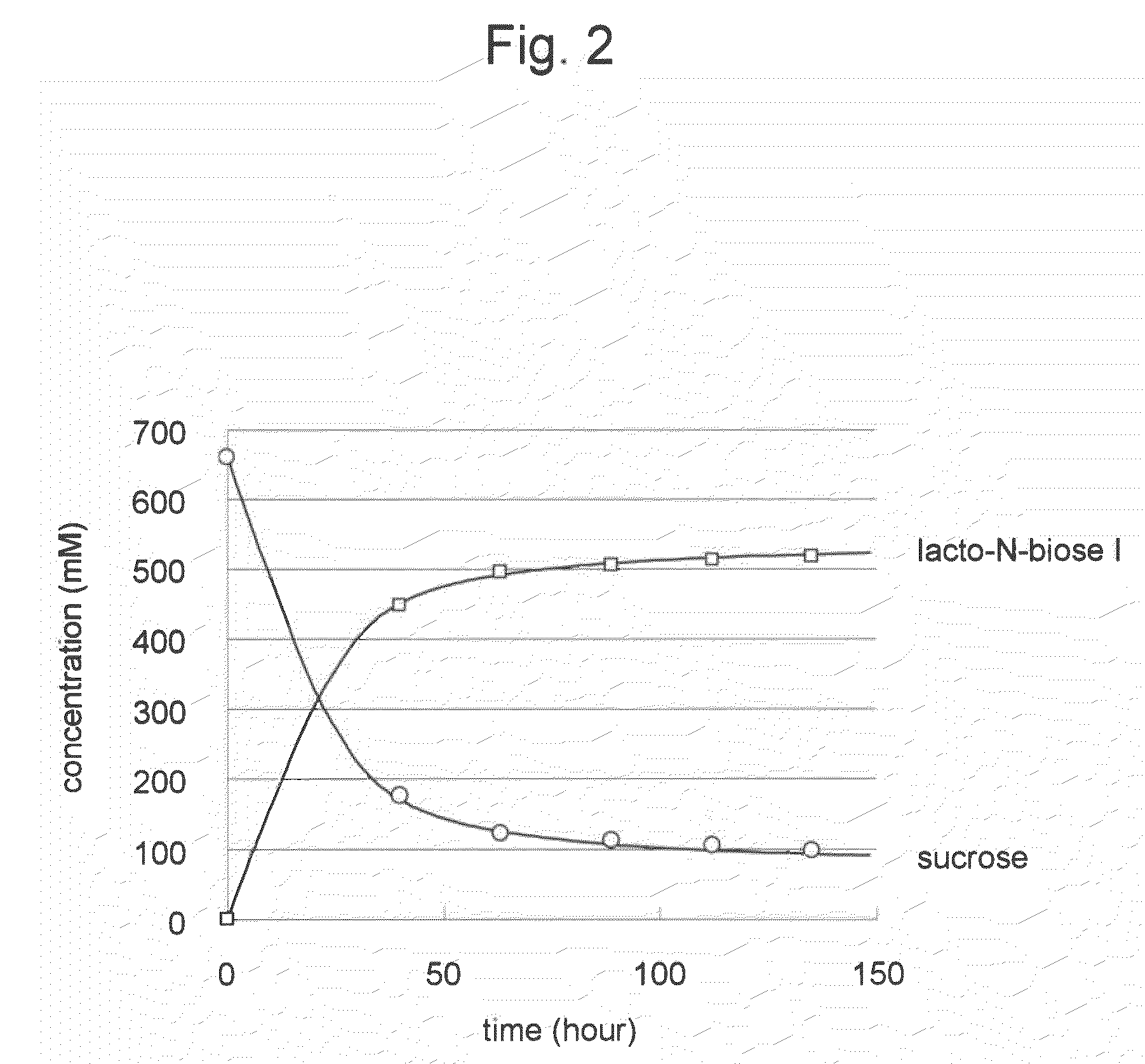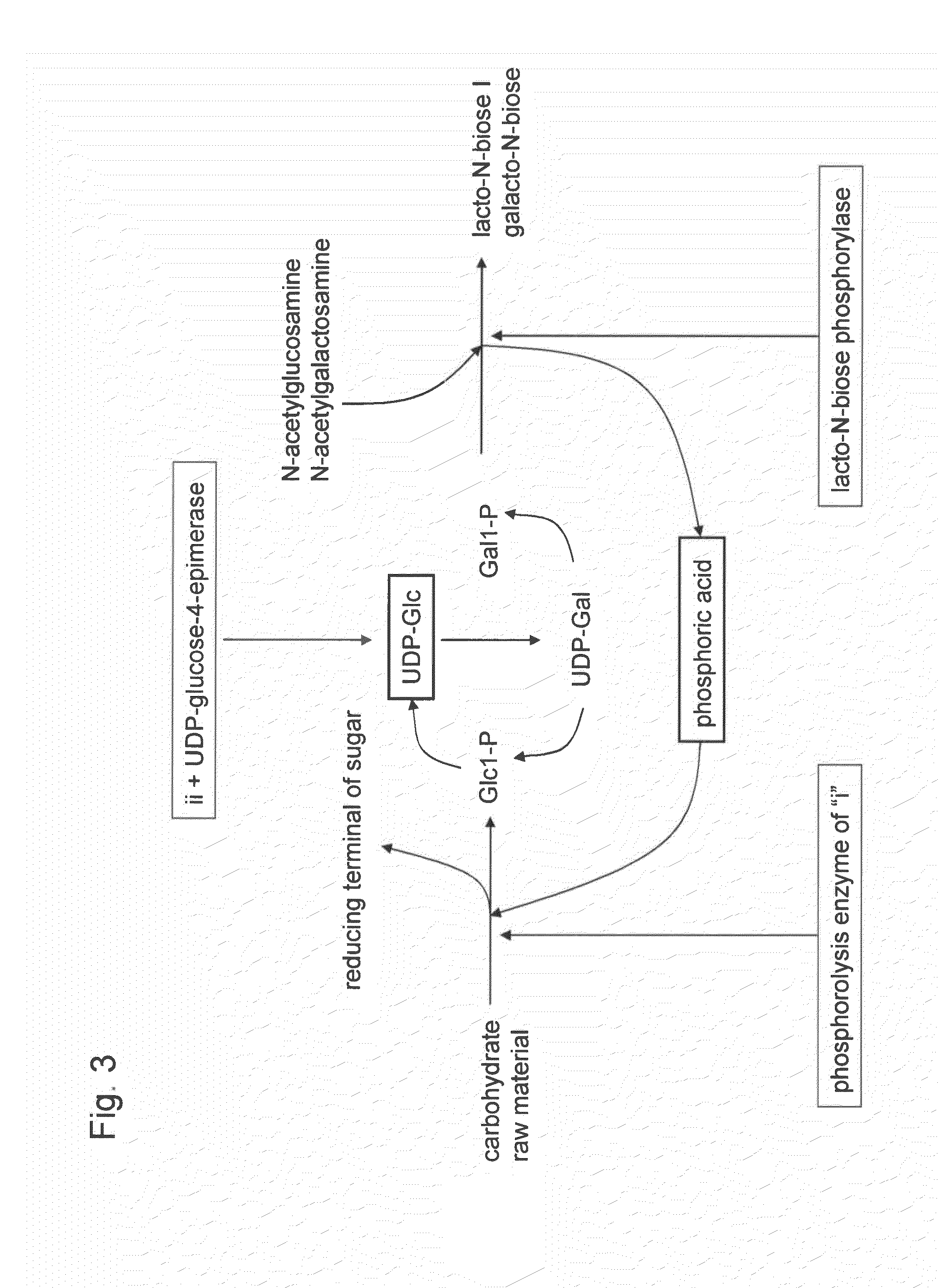Method for producing lacto-N-biose I and galacto-N-biose
a technology of lacto-n-biose and galacto-n-biose, which is applied in the direction of biochemical apparatus and processes, enzymology, transferases, etc., can solve the problems of low reaction efficiency of both methods, constant rising cost of compound production, and low practicability of both methods, so as to achieve convenient and easy carrying out and high cost
- Summary
- Abstract
- Description
- Claims
- Application Information
AI Technical Summary
Benefits of technology
Problems solved by technology
Method used
Image
Examples
example 1
Preparation of Enzyme
[0041]For the synthesis of lacto-N-biose I using sucrose as a carbohydrate raw material, to obtain lacto-N-biose phosphorylase, sucrose phosphorylase, UDP-glucose-4-epimerase, UDP-glucose-hexose-1-phosphate uridylyltransferase, and an enzyme having both activity of glucose-1-phosphate uridylyltransferase and activity of galactose-1-phosphate uridylyltransferase, the enzyme genes were isolated from the genomic DNA of Bifidobacterium longum JCM1217 strain. The lacto-N-biose phosphorylase gene was obtained by a method described in JP Patent Publication (Kokai) No. 2005-341883 A. For each gene of sucrose phosphorylase (BL0536; SEQ ID NO: 1), UDP-glucose-4-epimerase (BL1644; SEQ ID NO: 2), UDP-glucose-hexose-1-phosphate uridylyltransferase (BL1211; SEQ ID NO: 3), and the enzyme (BL0739; SEQ ID NO: 4) having both activity of glucose-1-phosphate uridylyltransferase and activity of galactose-1-phosphate uridylyltransferase, primers were designed based on the nucleotide ...
example 2
Conversion of Sucrose to Lacto-N-Biose I
[0044]Conversion reaction from sucrose as a carbohydrate raw material to lacto-N-biose I was carried out. The amount of the reaction solution was 1 milliliter. A substrate solution comprising 0.24 M sucrose, 0.24 M N-acetylglucosamine, 10 mM magnesium chloride, 30 mM phosphate-sodium buffer (pH 7.0), and 1 mM UDP-glucose at final concentrations was prepared. To the solution, 2 U of lacto-N-biose phosphorylase, 20 U of UDP-glucose-4-epimerase, 2.6 U of UDP-glucose-hexose-1-phosphate uridylyltransferase, and 2 U of sucrose phosphorylase, were added per milliliter of the solution, followed by 90 hours of reaction at 30° C. After the reaction was stopped by 10 minutes of boiling, the pH of the reaction solution was adjusted to 4.5 and invertase treatment was carried out so as to degrade the remaining sucrose. The reaction solution was analyzed with TLC (solvent acetonitrile-water 75:25; carrier silica gel 60). As a result, the concentration of lac...
example 3
Conversion of Cellobiose to Lacto-N-Biose I
[0045]Conversion reaction from cellobiose as a carbohydrate raw material to lacto-N-biose I was carried out. The amount of the reaction solution was 1 milliliter. A substrate solution comprising 0.24 M cellobiose, 0.24 M N-acetylglucosamine, 10 mM magnesium chloride, 30 mM phosphate-sodium buffer (pH7.0), and 1 mM UDP-glucose at final concentrations was prepared. To the solution, 2 U of lacto-N-biose phosphorylase, 20 U of UDP-glucose-4-epimerase, 2.6 U of UDP-glucose-hexose-1-phosphate uridylyltransferase, and 10 U of cellobiose phosphorylase, were added per milliliter of the solution, followed by 90 hours of reaction at 30° C. After the reaction was stopped by 10 minutes of boiling, the pH of the reaction solution was adjusted to 5 and then β glucosidase treatment was carried out so as to degrade the remaining sucrose. The reaction solution was analyzed with TLC (solvent acetonitrile-water 75:25; carrier silica gel 60). As a result, the c...
PUM
| Property | Measurement | Unit |
|---|---|---|
| concentration | aaaaa | aaaaa |
| pH | aaaaa | aaaaa |
| residence time | aaaaa | aaaaa |
Abstract
Description
Claims
Application Information
 Login to View More
Login to View More - R&D
- Intellectual Property
- Life Sciences
- Materials
- Tech Scout
- Unparalleled Data Quality
- Higher Quality Content
- 60% Fewer Hallucinations
Browse by: Latest US Patents, China's latest patents, Technical Efficacy Thesaurus, Application Domain, Technology Topic, Popular Technical Reports.
© 2025 PatSnap. All rights reserved.Legal|Privacy policy|Modern Slavery Act Transparency Statement|Sitemap|About US| Contact US: help@patsnap.com



